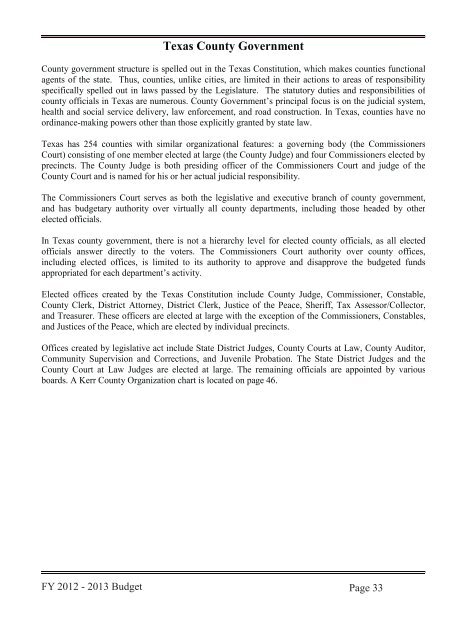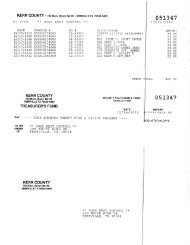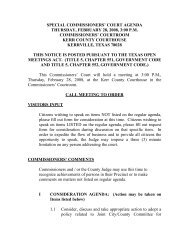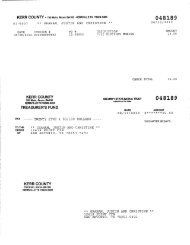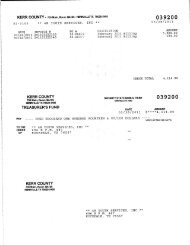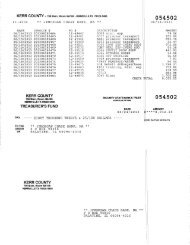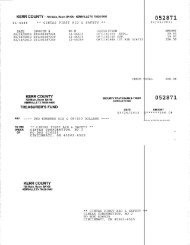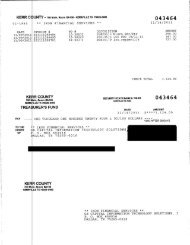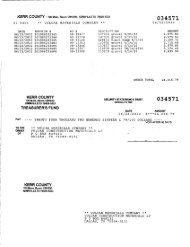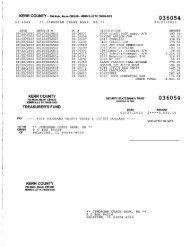Adopted Budget FY 2012-2013 - Kerr County
Adopted Budget FY 2012-2013 - Kerr County
Adopted Budget FY 2012-2013 - Kerr County
You also want an ePaper? Increase the reach of your titles
YUMPU automatically turns print PDFs into web optimized ePapers that Google loves.
Texas <strong>County</strong> Government<br />
<strong>County</strong> government structure is spelled out in the Texas Constitution, which makes counties functional<br />
agents of the state. Thus, counties, unlike cities, are limited in their actions to areas of responsibility<br />
specifically spelled out in laws passed by the Legislature. The statutory duties and responsibilities of<br />
county officials in Texas are numerous. <strong>County</strong> Government’s principal focus is on the judicial system,<br />
health and social service delivery, law enforcement, and road construction. In Texas, counties have no<br />
ordinance-making powers other than those explicitly granted by state law.<br />
Texas has 254 counties with similar organizational features: a governing body (the Commissioners<br />
Court) consisting of one member elected at large (the <strong>County</strong> Judge) and four Commissioners elected by<br />
precincts. The <strong>County</strong> Judge is both presiding officer of the Commissioners Court and judge of the<br />
<strong>County</strong> Court and is named for his or her actual judicial responsibility.<br />
The Commissioners Court serves as both the legislative and executive branch of county government,<br />
and has budgetary authority over virtually all county departments, including those headed by other<br />
elected officials.<br />
In Texas county government, there is not a hierarchy level for elected county officials, as all elected<br />
officials answer directly to the voters. The Commissioners Court authority over county offices,<br />
including elected offices, is limited to its authority to approve and disapprove the budgeted funds<br />
appropriated for each department’s activity.<br />
Elected offices created by the Texas Constitution include <strong>County</strong> Judge, Commissioner, Constable,<br />
<strong>County</strong> Clerk, District Attorney, District Clerk, Justice of the Peace, Sheriff, Tax Assessor/Collector,<br />
and Treasurer. These officers are elected at large with the exception of the Commissioners, Constables,<br />
and Justices of the Peace, which are elected by individual precincts.<br />
Offices created by legislative act include State District Judges, <strong>County</strong> Courts at Law, <strong>County</strong> Auditor,<br />
Community Supervision and Corrections, and Juvenile Probation. The State District Judges and the<br />
<strong>County</strong> Court at Law Judges are elected at large. The remaining officials are appointed by various<br />
boards. A <strong>Kerr</strong> <strong>County</strong> Organization chart is located on page 46.<br />
<strong>FY</strong> <strong>2012</strong> - <strong>2013</strong> <strong>Budget</strong><br />
Page 33


